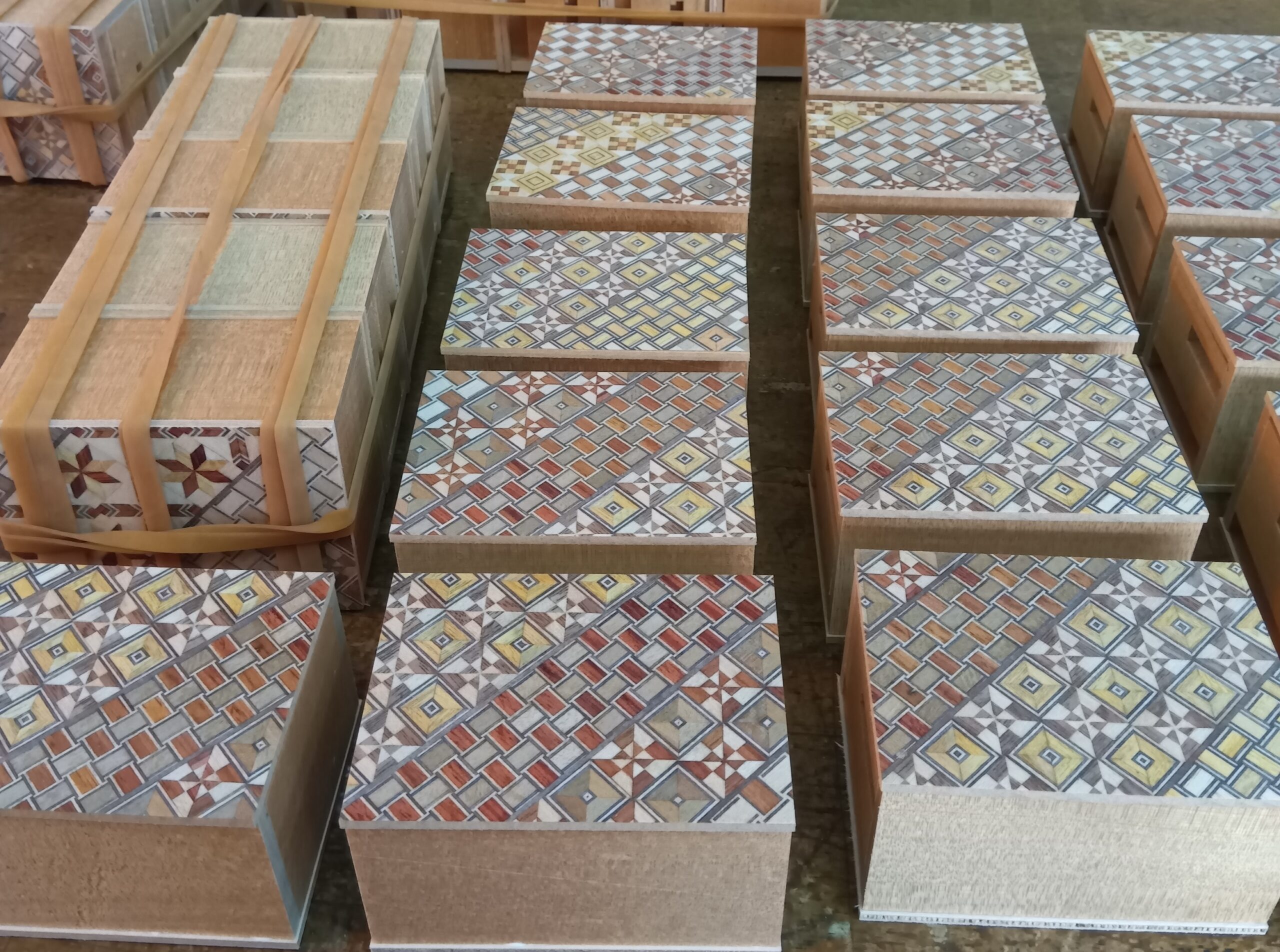16-Apr-2025
I didn’t do much work today because I went out. But I did stop by my workshop for a bit. I glued the top and bottom panels of the 3-sun 7-steps puzzle box, and also did a final check on the 2-sun cube and the 3-sun 18-steps box that I finished the other day.
This time, all the top and bottom panels I used are made with traditional yosegi marquetry. When I make top and bottom panels with yosegi designs, I usually attach a thin yosegi sheet onto a base board made of either shina plywood or MDF. The yosegi sheet is very thin—about 0.2 millimeters thick—so sometimes the texture or color of the base underneath can show through. If I use regular wood, the natural wood grain might become visible through the thin sheet, which can interfere with the appearance of the yosegi pattern. Shina plywood and MDF boards don’t have any wood grain, so they’re safer to use in that sense. Between the two, shina plywood tends to look cleaner and more refined. Shina wood is pure white, which helps the colors of the yosegi design stand out beautifully. MDF also gives a nice finish, but since it has a slightly brown tone, it can make the colors of the yosegi design look a bit darker compared to shina plywood. However, in recent years, the price of shina plywood has gone up, and it has become harder to find in stores. For that reason, I’ve recently been using MDF boards more often for the top and bottom panels of boxes that are 4-sun or smaller.
The weather was very clear today—though a bit windy—and I could see Mt. Fuji very clearly from where I went out. You can also see Mt. Fuji from my workshop, but this place was even closer, so the wind felt much colder. People often say that the wind blowing down from Mt. Fuji is cold, and I could really feel that today. There’s still a good amount of snow on Mt. Fuji, and by the time it all melts, it will probably be quite warm in our area.
By the way, Mt. Fuji isn’t located in Kanagawa Prefecture, where my workshop is. It actually sits between two other prefectures: Shizuoka and Yamanashi. Since it crosses over the border of both, people often talk about which prefecture Mt. Fuji “belongs” to. Because it’s such a major sightseeing spot, both locals from Shizuoka and Yamanashi feel that the front side of Mt. Fuji faces their prefecture. Of course, Mt. Fuji looks beautiful from both sides. where you can see Mt. Fuji from the ocean on the Shizuoka side. On the Yamanashi side, you can enjoy the view of Mt. Fuji from around the “Fuji Five Lakes” and sometimes you can even see the mountain’s reflection in the water. Both sides have their own unique and beautiful scenery.
I plan to be in the workshop all day tomorrow, so I should be able to make some progress on a few tasks.



